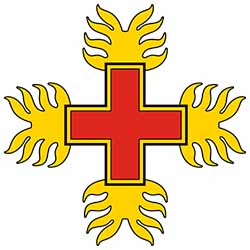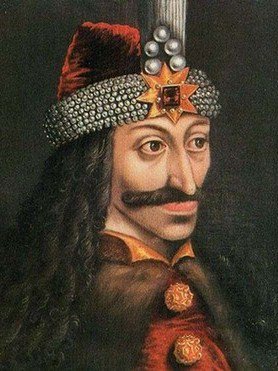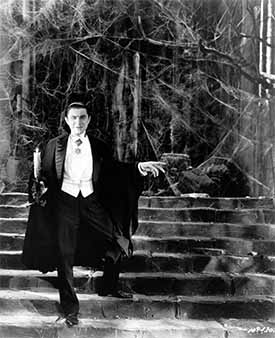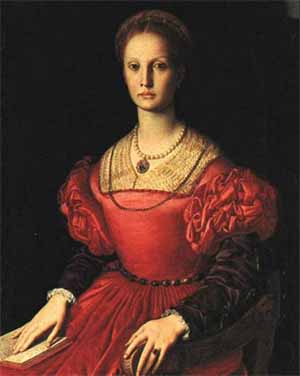Count Dracula Legend
Vampire Origins And The Prince of Darkness

The legend of Vlad the Impaler and his Transylvania castles is frequently associated with the origin of the myth of vampires. For many people, Dracula, a Latin nickname given to the Prince of Wallachia which means the "son of the dragon" or the "son of the devil", is synonymous with vampirism. He is often depicted as a purely bloodthirsty entity who impales his opponents without hesitation and whose thirst for power makes him a monster. Bram Stoker's bestselling novel Dracula has been instrumental in reinforcing the myth around this boyar and Prince Basarab.
Born under the sign of the Dragon

The story of Vlad III begins with that of his father, Vlad II, appointed Prince of Wallachia in Nuremberg in 1431 by Emperor Sigmund of Luxembourg. Vlad II becomes knight of the Order of the Dragon and receives a precious medallion on which is engraved the famous beast. It symbolizes the victory of good against evil and must be worn constantly. As a member of the order of the Dragon, Vlad II swears an oath to protect the interests of Christianity and to lead Crusades against the Ottomans. He will later be expelled from the order by the pope for refusing to join the crusade against the Turks.
Just crowned, the new prince settles in the region of Transylvania where he builds luxury hotels and has currency stamped with the effigy of the dragon. This is the beginning of the reign of Vlad II and people start to call him Dracul. Vlad II will remain Prince of Wallachia for more than 10 years, from 1436 to 1447, before being murdered along with his son Mircea by a rival wanting to take the throne.
Vlad III the Impaler

Vlad III, the "son of the dragon", was a brave warrior and a clever politician who, like his father before him, had chosen to devote his life to protecting the interests of the order. He was interested only in power and took a malicious pleasure in being feared by people. After the murder of Vlad II and his ousting of the throne by the Hungarians, Vlad III is captured by the Turks and forced to serve the enemy army and to learn their techniques of torture, same techniques that Vlad the impaler will reuse several years later in order to inflict on the Turks the most cruel tortures imaginable.
Helped by an aristocrat wishing to marry his daughter to Vlad, he manages to escape and, under the passage of a comet, takes over the throne of Wallachia during the summer of 1456. He is absolutely ruthless in his reform of the state and impaled everyone who dares to challenge him. His cruelty becomes legendary, people are terrified and they call him Vlad Tepes, Vlad the Impaler. Gossip reports that he frequently eats his meals under the bloody corpses of freshly impaled Turks. The writings of a Russian monk of the 15th century known as Efrosin are particularly eloquent on this subject. One passage in particular tells that Count Dracula even went so far as to impale servants who dared to cover their noses because of the putrid odor emanating from the corpses.
Vlad III suffers in 1476 the same fate as his father; he is assassinated by Laiota Basarab, his successor to the throne. Pope Pius II, contemporary of Vlad Tepes, leaves us the following simple and eloquent description: "he was a tall and proud man".

The link with vampires
Besides the fact that Dracula is, like vampires, a highly maleficent and bloodthirsty being, one wonders why Vlad the Impaler is so closely linked to the phenomenon of vampirism in popular culture? It seems that the myth of Count Dracula and the immortal vampire comes from the imagination of the British writer Bram Stoker who was inspired by Vlad III to produce his book. In his famous novel published in 1897 and repeatedly picked up by American cinema, Stoker portrays Dracula as a tall old man with a long white mustache and pale, pointed ears who feeds on the blood of the living before transforming them into demonic creatures. He is unable to bear the sight of sacred symbols and can turn into a bat at will before disappearing behind a thick fog.
Cinematic depictions of Bram Stoker's novel, movies such as Blade and television series like Buffy the Vampire Slayer also greatly contributed to the popularity of Count Dracula's legend and that of vampires. It is to Bela Lugosi, a great horror actor of the 1930s, that we owe Dracula's best performance. With his elegant aristocratic look, he has portrayed the Prince of Darkness in an unforgettable way.

Countess Elisabeth Bathory
The Hungarian Countess Elisabeth Bathory, born in 1560 in one of the richest and oldest families of Transylvania, is also well known for her legendary acts of cruelty and her obsessive vanity. Constantly afraid of losing her beauty, Countess Bathory regularly offered herself rejuvenating baths in the blood of young girls whom she bled over the bathtub. The sordid massacres of the countess lasted for nearly 10 years before she was sentenced to life imprisonment. One of her guards found her dead, face down, four years later.









































































































































































































































































































































